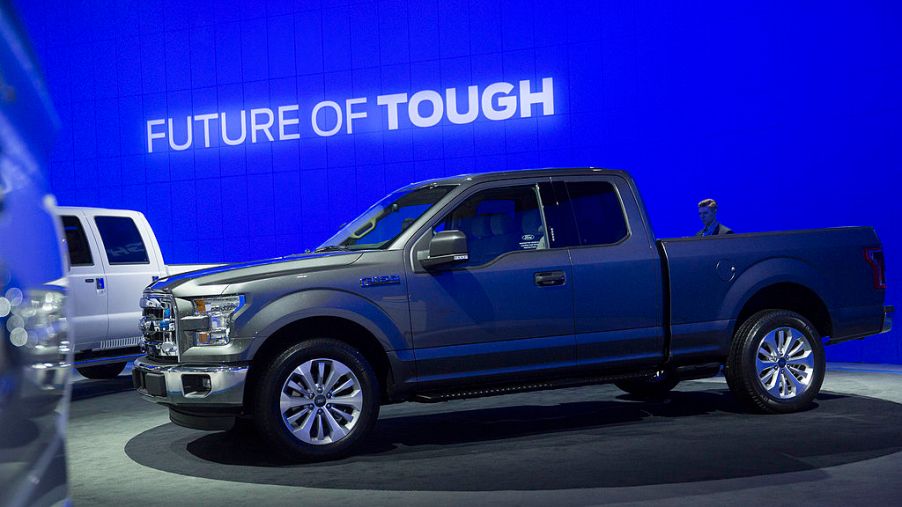
How Many Generations of Ford F-Series Trucks Are There?
Ford is considered one of the most iconic and popular brands of all time. Part of the historical success can be attributed to the lineup of F-Series trucks. From the first Model TT chassis cab, launched in 1917 to today’s leather-donned crew cabs, the Ford F-Series has featured 13 generations of rugged value and performance.
Where the Ford F-Series began (1917-1941)
The Model TT first rolled out to the public in July of 1917. It was a unique combination of the Model T’s engine and one-ton payload accommodations. That first year, Ford sold the trucks at $600 each. The factory-assembled Model T with a pickup body style debuted in 1925. By 1928, over 1.3 million drivers had Model TT trucks on the road.
Following additional models, including the Ford AA and Ford BB, 1935 Ford launched the Model 50 pickup. This beast featured a flathead V-8 and stylish updates, commonly shared among the Ford cars those years. Over 4 million Ford Model 50s were produced at the time, although it was eventually halted due to the war efforts.
Significant changes over the years (1953-Present)
The second generation of Ford F-Series came in 1953, with the official naming that remains today. The F-1, F-2, and F-3 trucks assimilated into F-250 and F-350. Heavy-duty models shifted into the Ford commercial divisions, and luxury amenities began to creep into the F-Series models. The V-8 flathead was swapped out for the overhead-valve 8 in 1954.
The third-generation Ford F-Series launched the four-wheel-drive option in 1959. By this time, the overall design of the truck had included many of the comfort features the cars were commanding in the day.
Then, by the mid ’60s, the fourth generation had available two-wheel-drive models, and the slogan, “Drives like a car, works like a truck.” The ’60s also brought the first factory-built crew cab, as a special- order option, as well as the debut of the Ford Ranger in 1966.
By the late ’60s and early ’70s, the fifth and sixth generation of F-Series featured redesigned grilles, head, and parking lamps, as well as the iconic FORD symbol across the grille.
The F-150 debuted in 1975. In the ’80s, the F-Series focused on improving aerodynamics and cushier designs. While the F-100 still held some popularity, the F-150 officially took over as the base model in 1983.
For its 50th anniversary, the eighth-generation Ford F-150 got a facelift that included a new grille, power steering, power brakes, and rounded wheel arches. The base 6-cylinder engine added fuel injection too, increasing power and torque. Ford also launched the Nite Edition in 1991, featuring 4×4 XLT Lariats, in all black. In its ninth generation, Ford F-series outsold the VW Beetle as the world’s best-selling vehicle.
The mid to late ’90s brought the tenth generation of F-Series, and the 1993 F-150 SVT Lighting, with a hefty V-8 and automatic transmission. Ford also made significant design changes to the F-150 and began marketing the F-150 more to the general public. This new look also had a leaner chassis and new torsion-bar setup. The eleventh generation, made available in 2004, launched with more creature comforts, including extended cab options, designed to meet the needs of the public’s interest in a daily-driver truck.
By the twelfth and thirteenth generations, the F-Series offered sleeker designs, plush amenities, and a variety of engine size options. From the EcoBoost V-6 to the Platinum trims, there was a functional and luxury truck combination for everyone. In 2010, Ford launched the Raptor, the F-150 SVT, that seemed to catch everyone’s attention.
Today’s F-Series and thirteenth generation didn’t have much to reinvent for success. However, it did offer an aluminum body and boasted a five-star safety rating with NHTSA. The Super Duty is still the top-selling vehicle today as well, here in the United States.
Over the last few years, Ford continues to make enhancements in wheel design, direct-injected 3.3-liter V-6, and a new half-ton diesel variety of the F-150.
When to expect the next generation of Ford F-Series
With its ongoing success, you might not expect much in significant changes to the Ford F-Series lineup in the years to come. However, be prepared for substantial updates, including the more affordable trim options, new standard features, and technologies. New colors are available too.
The 2021 model, expected to launch next year, is rumored to have more changes and a new face to the next generation of F-series. Expect touch screens and interior control enhancements, and an overall style mesh of classic American workhorse with modern luxury.
Making its mark on the American roadways, the Ford F-Series of trucks has proven to make a lasting impression. It may be an exciting 2020, and generations to come, as Ford continues to enhance this signature family of trucks.


